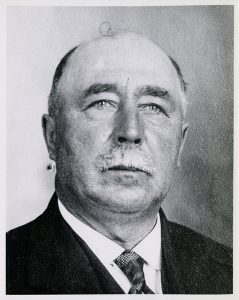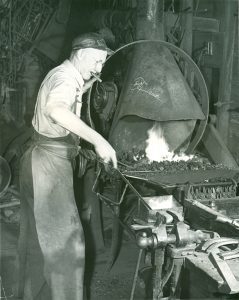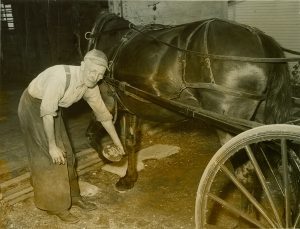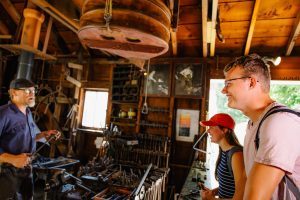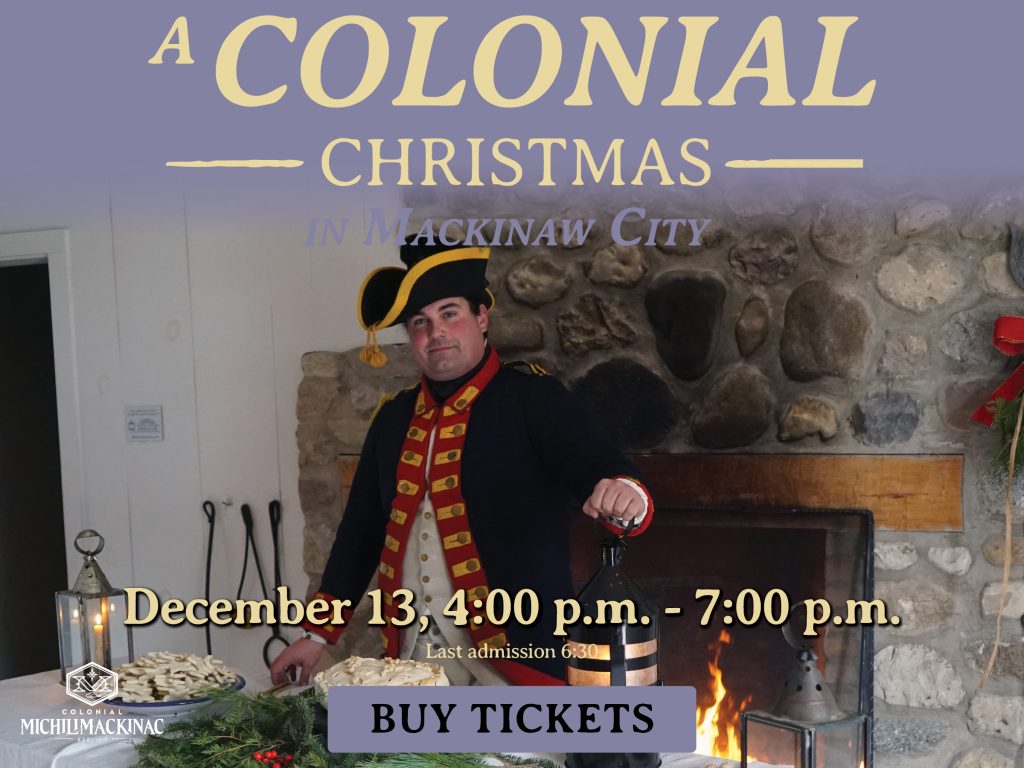Since Europeans settled on the Straits of Mackinac, a few distinct economic eras have affected people’s lives. Aside from the fur trade, tourism has had the most significant impact on Mackinac Island. Tourism affected the entire island, not just the hospitality industry. Islanders adapted to change as the busts and booms of the tourism industry affected their daily lives, and newcomers to the island would bring their skills to improve the community.
After buying the Star Blacksmith in 1885, Robert Benjamin brought his young family to the island for the first time—those first two seasons on the island were very difficult, with little financial gains. Blacksmithing was still a common occupation in the 1880s. Still, it was slowly beginning to decline with industrialization and cheaper, ready-made metal products. What saved Robert’s shop was one of the most ambitious construction projects on Mackinac Island to this day, the construction of Grand Hotel in 1887. Grand Hotel provided Robert with the work he needed to get his struggling shop off the ground and establish his family as a part of the wider island community.
Robert’s son Herbert would take over the shop in 1900 after Robert was elected Sheriff of Mackinac County. Working in the blacksmith shop for the next 65 years, Herbert witnessed significant changes not only on the island he lived on but also in the kinds of work he did. A blacksmith in the 19th century could count on a steady stream of horses and farming equipment coming through their shop to make money. Working as a farrier, shoeing horses, or creating and repairing tools for everyday work, blacksmiths were common in any city or town. By the early 20th century, cars rapidly replaced horses, and mass-produced tools became the norm. Herbert remained one of the few full-time blacksmiths in the United States thanks to the auto ban on Mackinac Island in the late 1890s. Even on an island with an abundant supply of horses to shoe, it would not be enough to keep Herbert in business; he had to expand his range of work as new technologies and businesses came to the island.
Tourism on the island grew significantly following World War Two. The 1950s and ’60s brought even more people visiting the island every summer. New businesses and institutions became a part of the fabric of Mackinac Island, and Herbert would do business with nearly everyone. Herbert shoed horses from Carriage Tours, Gough Stables, the MRA, and many summer cottagers and islanders. He expanded his work to do carriage repair, patent leather work, small engine repair, and even sharpening lawn mower blades. When Mackinac State Historic Parks set about restoring the Biddle House in 1959, Herbert provided $95.00 worth of restoration work.
Herbert occupied a rare position as a village blacksmith well into the 1960s, long after most blacksmiths had closed their doors and retired. He finally retired in 1965 at the age of 82. His retirement marked the end of a regular village blacksmith on Mackinac Island, though farriers still work there. Following his death in 1967, Herbert’s family donated the shop and its contents to Mackinac State Historic Parks. In addition, the shop was moved from its former location on Benjamin Hill, on the west end of Market Street, to its current location, next to the Biddle House.
A blacksmith still works in the shop during the tourist season, from May to October. Though they aren’t shoeing horses, you can often see them working as Herbert did in the 1950s and ’60s on many projects. They use these projects to talk about the changing environment of blacksmithing in the mid-20th century and how Mackinac Island preserved an industry that had once been ubiquitous worldwide for thousands of years. So, on your next visit to Mackinac Island, be sure to stop in at the blacksmith shop, take in the sights and sounds, and learn even more about the changes in blacksmithing and the uniqueness of Mackinac Island. The Benjamin Blacksmith Shop is open from May 12 – October 8.






